Free download: Top 10 Natural & Easy Remedies for Joint Pain from Home. Learn these helpful remedies.
Estimated Reading Time: 10 minutes read
Back pain is common but that doesn’t make it any easier to deal with. One of the most frequent forms of back pain is sciatica, a version of back pain that can radiate from your back into your glutes and even down to your foot. Basically, sciatica is a literally pain in the you-know-what.
If you’re not sure you have Sciatica check out our article “Things you Need to Know about Sciatica Pain”.
This article covers what sciatica is and common symptoms to help you understand your pain more!
You may already be sure you have sciatica or have been told by your primary care physician.
In that case, we’re going to cover some of the best exercise and stretches for sciatica nerve pain.
Table of Contents
Quick Review: What Causes Sciatica Nerve Pain
Sciatica pain happens when the sciatic nerve is being pinched.
The sciatic nerve is a long nerve that runs from your spine down the back of your leg, so there are many places it can be pinched.
In fact, you can experience Sciatica Pain in your left or right side, knee, foot, buttock, and even in your calf.
Nerve pinching could start from where the nerve leaves the spinal cord and could be from a bone spur, scoliosis, stenosis, herniated disk, or general degeneration of the spine.
The nerve could also be pinched by tight muscles further along its path, especially in your hips and glutes.
What to do About Sciatica Nerve Pain
Before 2020 living a sedentary lifestyle was already a problem for many of us.
Then add in a global pandemic in 2020 where you have to stay home! Be honest, now you’re spending even more time sitting.

Even if you go for a walk every day, you may still find that you spend most of your day sitting to work, watch TV, read, etc.
That extensive time sitting adds up fast and makes you vulnerable to common areas of muscle tightness and weakness in your hips.
Those areas of tightness and weakness can easily lead to sciatica symptoms! This means we need to address common areas of tightness and weakness to treat sciatica at home!
First Thing to Tackle: Muscle Tightness
Muscles in your hips are in a shortened position when you sit. Muscles adapt over time, so if you’re spending most of your time sitting with muscles in a shortened position they will stay short. Short hip muscles will pinch the sciatic nerve!
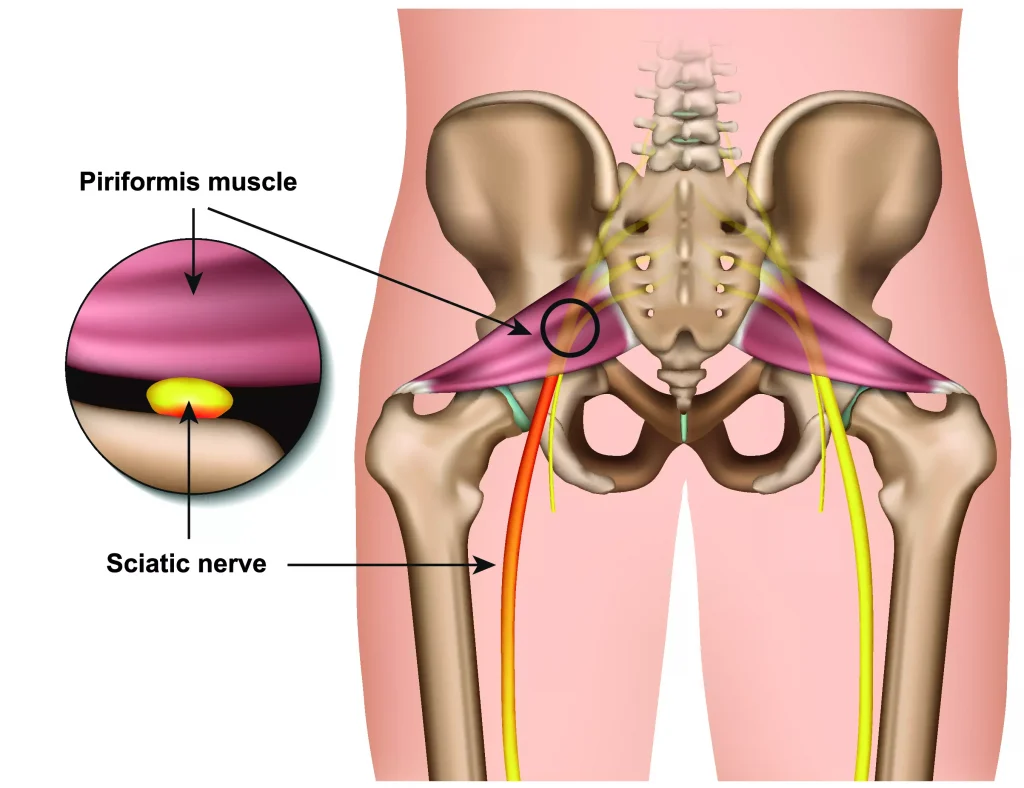
One of the biggest culprits for a short muscle pinching the sciatic nerve is the piriformis.
This isn’t a muscle we hear about day-to-day, but it’s at the top of every Physical Therapist’s hit list for treating sciatica.
The Piriformis is a small muscle that is deep in your glutes that’s job is to help rotate your leg.
While it’s small it has a huge impact on sciatic pain.
The reason this muscle has a large impact is because the sciatic nerve runs right next to the piriformis.
In some people the sciatic nerve even runs through the muscle! Either way, if the muscle is tight it pinches the nerve and causes sciatic pain.
How to Tame the Piriformis Muscle:
One of the best things is to do is stretch the muscle:
Piriformis Stretch
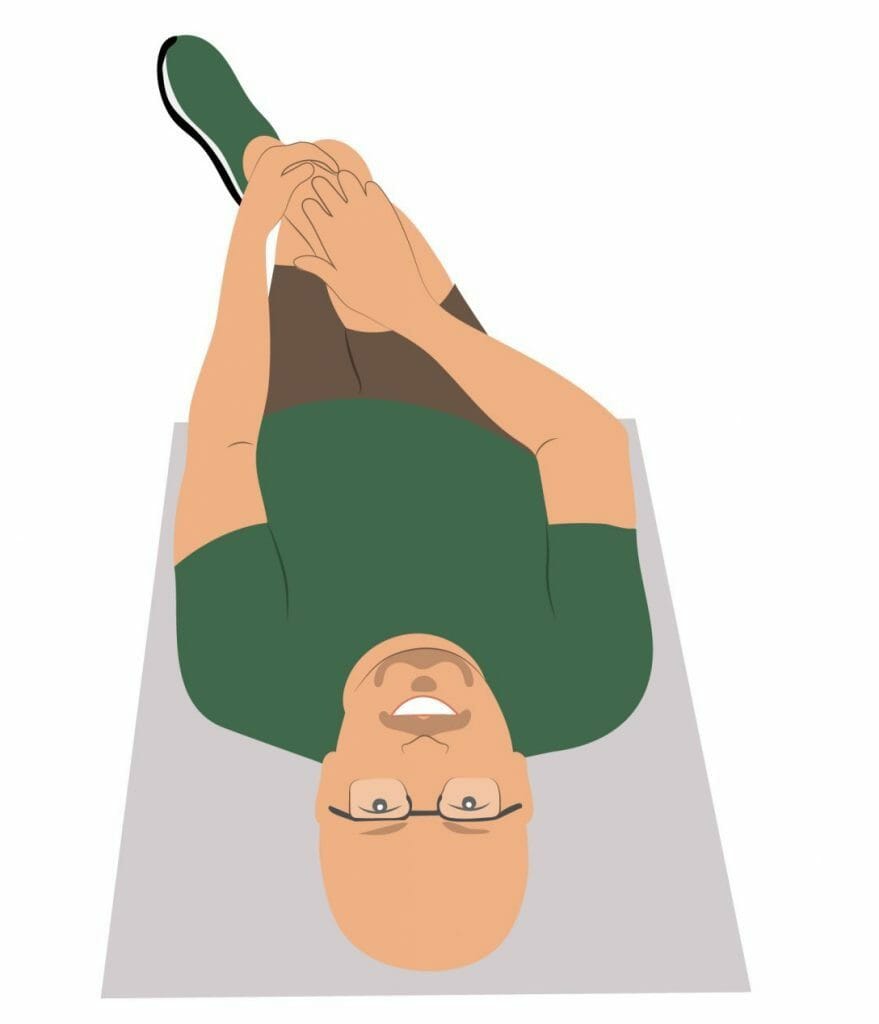
- Begin by lying on your back with both knees bent.
- Cross your left leg over your right, then using both arms gently pull your left knee towards your right shoulder. Pull until you feel a stretch in your left glute.
- Hold for 30 seconds. Relax and repeat on the opposite leg. Repeat three times total on each side.
If you’ve read any of our other articles with stretches you’ll know how strong we feel about holding the stretch for the full 30 seconds.
Yes, it will be the longest 30 seconds of your life, but use a timer and try to hold for the full 30 seconds.
According to research, you need to hold a stretch for 30 seconds to change the length of the muscle.
You have to change the length of a tight muscle to take pressure off the sciatic nerve.
Another important thing to do to tame the Piriformis is to release tight trigger points in the muscle.
Sadly, this can’t be done by just trying to relax or play soothing music.
The best way to release trigger points is to use a tennis ball, lacrosse ball, or some type of massage ball.
Listen, the piriformis muscle is tight so it’s not going to be happy about being released and you will feel some discomfort, but hopefully it’ll be a “hurts so good moment.”
Release Trigger Points in the Piriformis
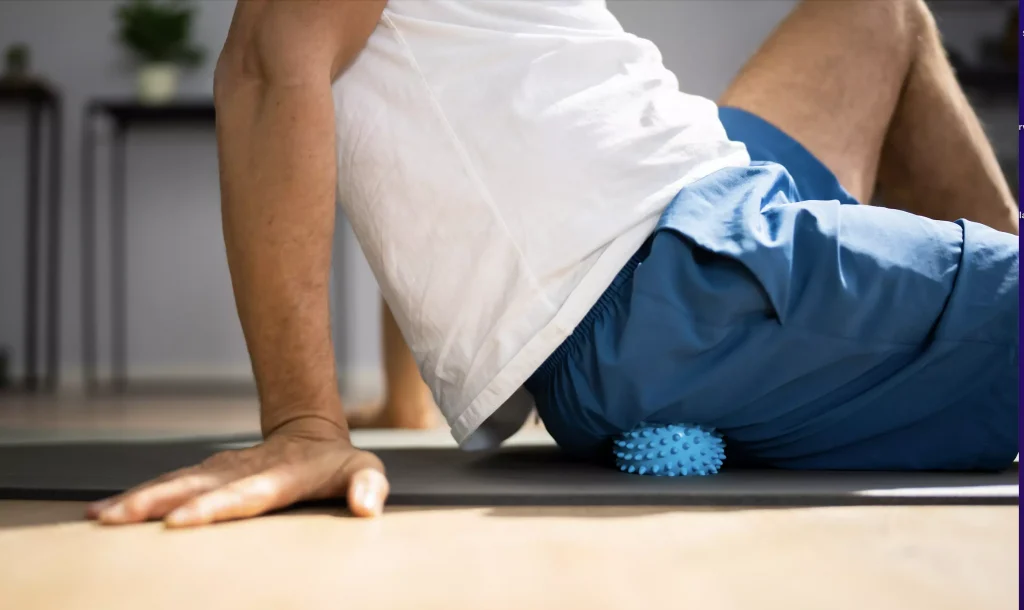
- Stand next to a wall and place a lacrosse ball, tennis ball, or massage ball between your bum and the wall. Sciatica presents on one side or the other, so if you’re experiencing left-sided pain place it on the left and vice versa.
- Lean against the wall and move your hips to roll the ball around until you feel a tender area. Remember, “tender” means you’ll feel pain, so if it feels like too much pain you can always adjust how much pressure you use. You can always lean further forward if you feel like you’re in too much pain.
- Hold over the painful area for 30-60 seconds and then continue to roll across the spot 10-20 times.
The key to taming a tight piriformis is consistency! The more you keep up with stretching and releasing the piriformis the faster you will get results (and the more permanent the results will be).
Try to perform these exercises every day. You may feel too tender using the massage ball every day, but try to use it every other day or every three days.
Remember, we sit a lot so the piriformis is shortened for most of the day so you have to be consistent to try to balance everything out!
Strengthening Exercises to Help with Sciatica Pain

While the piriformis is a common cause of sciatica, strengthening your hips will also help with Sciatica pain. Take a moment to picture your normal recreational activities…
While being active is important, the most common recreational activates (walking, jogging, running, hiking, biking, etc.) only target some of your hip muscles.
You might be thinking to yourself right now, “but I am active and use my muscles! How can I be missing something?”
While all those activities are great, they don’t involve much – if any – lateral movements. Lateral movements are any side-to-side movements. Think of crabs, they do a ton of lateral movement!
The lack of natural lateral movement with common recreational activities means we’re not strengthening our hips equally. We have stronger hip flexors since we use them a lot, but often have weak hip abductors – the muscles used to lift your leg out to the side.
That weakness can make it easier for the sciatic nerve to get punched because there isn’t complete muscle support.
Remember, when trying these new exercises listen to your body. Muscle burn is fine, but if you feel an increase in pain, pause the exercise. When in doubt reach out to your Primary Care Physician about the safety of starting new exercises.
Clamshells
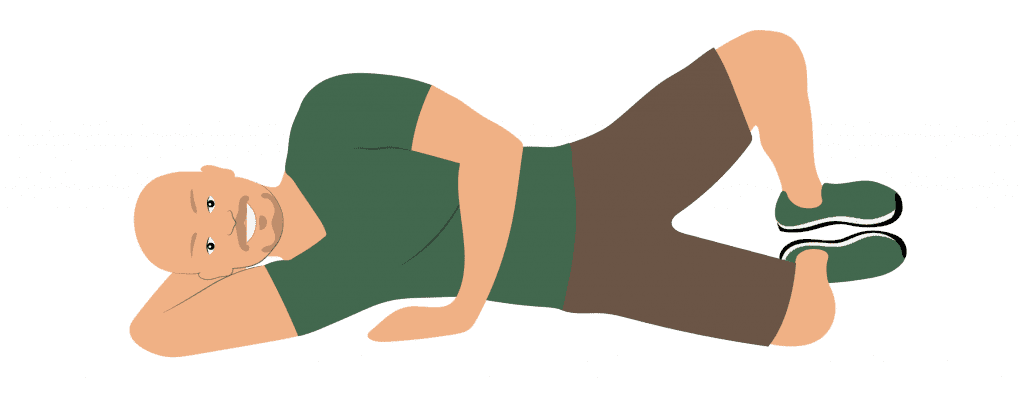
- Start by laying on your side with both knees bent.
- Keep your feet in contact with each other and then rotate your top leg up. Make sure you keep your spine in alignment and don’t let your hips rock back! Rule of thumb is to do a smaller range of motion if you think your back is moving.
- Rotate your top leg back down to the starting position.
- Try to complete three sets of ten on each side if you don’t feel an increase in pain.
Side-Lying Leg Lifts
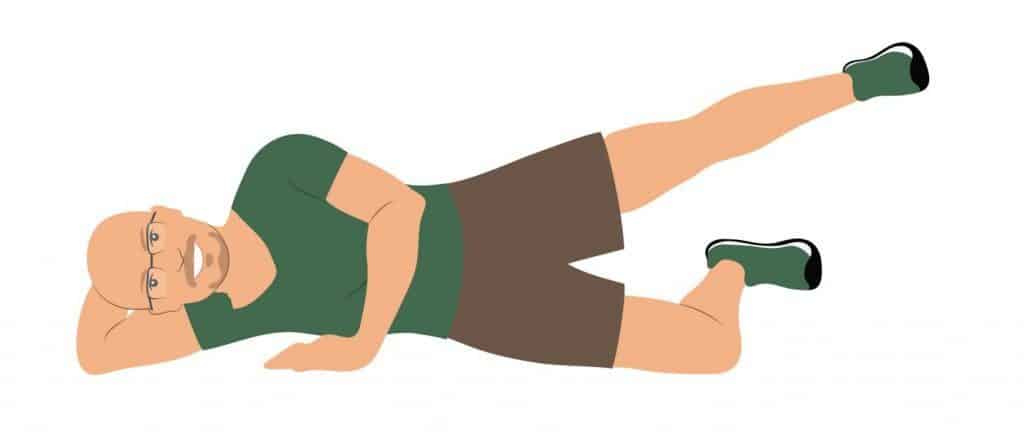
- Lay on your side with your bottom knee bent and your top leg straight. Look down your body to see if your top leg is in line with your trunk. It’s common for the top leg to swing forward a little so you may have to bring your top leg back an inch or two so that your body is in a straight line from the tip of your head to the tip of the foot on your straight leg.
- Slowly lift your top leg towards the ceiling about 6-12 inches keeping your leg in line with your body, don’t let it float forward. Then lower your leg back down.
- Keep your hips and shoulders square to the wall in front of you while your leg moves.
- Try to complete three sets of ten on each side if you don’t feel an increase in pain.
Final Thoughts
While Sciatica is a pain in the you-know-what, there are ways to treat it at home and to work on avoiding surgery. Try out the tips in this article and check out this video of Coach Todd going over the techniques.
If these helped you out comment below on which one was your favorite!
FAQ’s:
Can You Cure Sciatica with Exercise?
Ultimately, everyone’s body responds differently to exercise and sciatica could have many root causes; however, sciatica symptoms are likely to improve with exercise. If you feel like you need more support, reach out to your Primary Care Physician and they may recommend physical therapy. A Physical Therapist could help you can learn even more exercises and progressions of exercises to help cure your sciatica symptoms.
Is Bed Rest Good for Sciatica?
While your instinct might be to stay off the painful leg, resting tends to lead to more muscle tightness and weakness which only increases the problem. If you’re in too much pain to perform exercises reach out to your Primary Care Physician about potential ways to reduce pain so that you can tolerate stretching and strengthening exercises to help with your sciatic pain.
How Can I Relieve Sciatic Pain with Walking?
Try out the stretching and strengthening exercises we discuss in this article before walking. They will help increase blood flow and warm up your muscles so there is hopefully less pinching and pain while walking.
What Should I Avoid if I Have Sciatica Pain?
First, listen to your body. If you’re participating in an activity that significantly increases your pain you want to pause the activity. Try stretching and strengthening before the activity and see if that helps with pain. However, if pain continues or progresses reach out to your Primary Care Physician to learn ways to reduce pain or learn more about how Physical Therapy could help you.
Why Does Sciatica Hurt More at Night?
In general, we feel more pain at night because we produce less cortisol (an anti-inflammatory hormone) and we have fewer distractions. You also might feel more sciatic pain at night because when we lay on our back with our legs stretched out your lumbar spine – where the sciatic nerve exits – is in more extension which could cause more pinching.


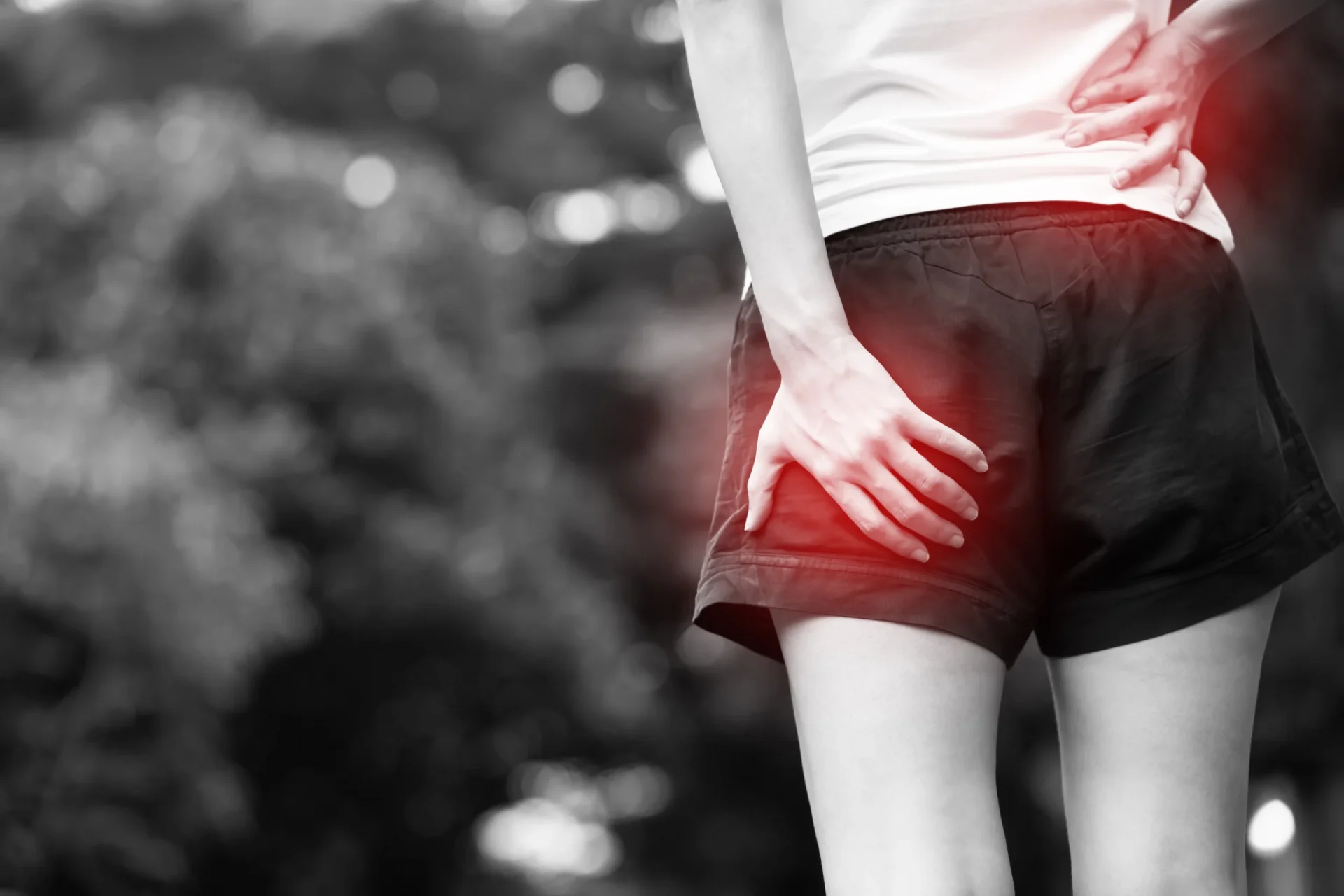





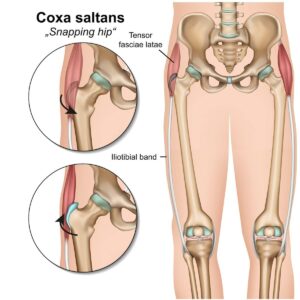
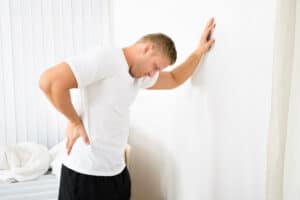

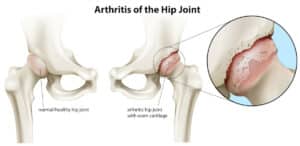


4 Responses
i LOVE HOW SIMPLE YOU MAKE THE EXERCISES FOR SENIORS.
i HAVE SUFFERED WITH MANY BACK AND HIP PROBLEMS INCLUDING SCIATICA.
i NEVER KNEW ABOUT THE BALL EXERCISE UNTIL NOW. MY HUSBAND HAS A MASSAGE CHAIR AND I JUST
SIT IN IT AND THE BALLS RUB ALL OVER THE AREAS YOU MENTION AND I FEEL SO GOOD. NO PAIN FOR DAYS
THANKS
That's amazing, Sharon! I am so glad that the exercises are simple yet effective for you. That's awesome that you're experiencing no pain! You're welcome, and thank you for reading!
The favorite today is the Hurdle exercise for adressing sciatica. Thank yiu, Coach Todd!!!! Very timely and helpful!
That's great, Anne! I'm glad to hear that the exercise is helpful. You're welcome!